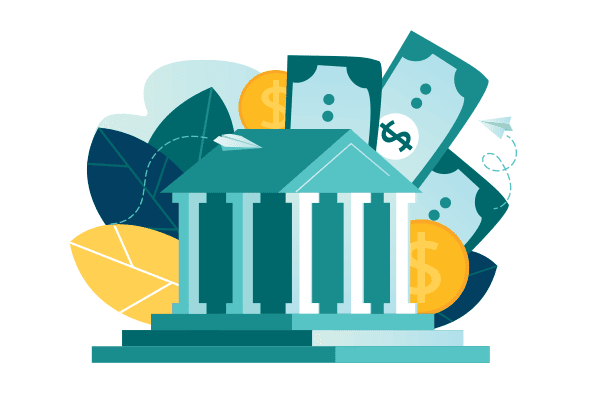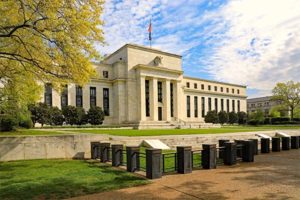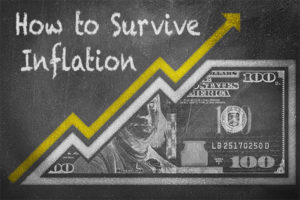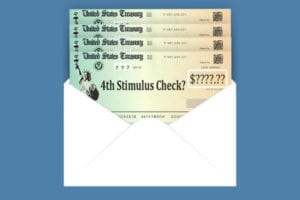As the COVID-19 crisis drags on and unemployment spikes to unprecedented levels in the U.S., individual debt burdens can feel more overwhelming than ever.
On top of it, as many people’s paychecks shrink, or even disappear, the reliance on credit is growing.
From the first week in April to the first week in May, those who feel their debt is manageable dropped, as did those who said they could pay off their credit card balance each month and those who can pay their bills on time, according to J.D. Power’s weekly survey of the financial effects of COVID-19.
Forbes reported in April that some companies are also “dangling carrots” for cardholders to keep using their cards. “We’re seeing statement credits, expanded points earning opportunities, and flexibility in how we spend our benefits,” the financial magazine said.
But those who need temporary relief will have to work a little harder to get it.
Many credit card companies have programs and options for those who are feeling a financial pinch from COVID-19, but card holders have to contact the credit card company themselves to make it happen.
And all of the programs are temporary. Those who need long-term debt relief will have to consider other options.
Types of Credit Card Relief for COVID-19
Credit card companies and banks are offering coronavirus financial relief ranging from specific payment deferral programs to individual help crafted to the card holder’s situation.
Some have online forms to fill out, some have extensive information on their websites. Others simply ask customers to call, without offering many specifics.
The process looks a lot like the traditional negotiation for those looking to lower their credit card bills, with the difference being that credit card companies recognize the circumstances are unique, and are poised to provide temporary relief to those who qualify.
In general, the type of relief you can ask for includes:
- Lower minimum monthly payments
- Waived or refunded late fee
- Lower interest rate
- Increase credit limit
- Payment plan to pay off balance
Each one of these has pros and cons, and may be a great fit, or may not be right for your financial situation.
Lower Monthly Minimum Payment
This is a form of emergency forbearance, allowing customers to skip payments, or have lower payments, for a limited time. It’s temporary and you’ll have to make it up once the term ends. That will likely mean larger than normal payments in the future.
Waived Late Fees
If you are having trouble making payments because of the pandemic, the traditional fees that card companies normally charge for late or missed payments may be waived. These won’t have to be paid back.
Lower Interest Rate
Your credit card company may temporarily reduce your interest rates, which will lower your monthly payment. The rate will likely return to what it was before when the term ends.
Paying off Balance with a Payment Plan
The company may agree to a repayment plan that fits your budget, but be aware this often means closing the account and not using the card.
Increased Credit Limit
Some card companies are reducing credit limits as a way to minimize risk. If this has happened to you, you can call and ask them to reconsider if you need the card to pay bills during the COVID-19 crisis. If your limit hasn’t dropped, you may still want to consider asking for a higher limit. Some credit card companies are doing this for customers who are in good standing.
Understand What You’re Getting Into
The good news is that many of the programs will not report those they’re providing relief to negatively to credit reporting agencies, meaning the programs won’t affect credit scores.
But there are also some negatives. For instance, deferred payment programs that still accrue interest mean you’ll have bigger monthly bills once the payments come back, and you may end up paying more in the long run.
And while many let you use your credit card despite deferred payments, that can also mean a bigger bill down the road if you increase your debt load substantially.
The Consumer Financial Protection Bureau and AARP both caution those who are planning to look for relief to check their card company’s website or mobile app first. Many have ways to apply online and avoid long waiting times on the phone.
Checking the website first will arm you with information about what your credit card company or bank may be allowing and if you qualify, and what information they want you to have in hand when they talk to you.
Credit Card Relief Programs for COVID-19
Each credit card company that’s providing COVID-19 credit relief has its own way of doing it, and many aren’t one-size-fits-all programs for all customers.
Also, as the overall economic situation surrounding the pandemic changes, many banks and credit card companies are changing policies to match what’s going on.
While information provided here is as up to date on Memorial Day, check your credit card company’s website to see if anything has changed in the rapidly changing coronavirus economy.
Here is the latest on what some of the major credit card companies are offering:
American Express COVID-19 Relief
American express on May 22 enhanced its Financial Relief Program for its U.S. consumer and small business card holders. Those who seek relief must enroll in the program. Those who qualify can ask for lower monthly payments and interest rates, as well as get relief from future late payment fees.
Card holders must call or chat online with the company to enroll in the program.
American Express will report accounts of those who are enrolled and make their required payments as current to credit bureaus.
Those enrolled in the program don’t have to reapply after successfully completing the program, and those in the short-term payment plan who are current on their payments can continue to use the card, up to a reduced limit, and can earn and redeem rewards.
Bank of America COVID-19 Relief
Bank of America has a Client Assistance Program for both consumers and small business owners that allows them to request refunds for overdraft, non-sufficient fund and monthly maintenance fees. They can also request help making payments. It begins with an online application on its site.
Barclays COVID-19 Relief
Barclays is helping credit card customers whose finances are affected by the COVID-19 crisis on a one-on-one basis. Its page has a specific place for credit card customers to click and sign in to begin the relief process.
It has also extended its customer service hours for credit card customers from 8 a.m. to 11 p.m. Monday through Friday
Capital One COVID-19 Relief
Capitol One is asking customers to contact it directly to work out individual solutions to financial hardship. It’s also encouraging cardholders to use digital tools online and via the Capital One mobile app, because of long phone wait times.
Chase COVID-19 Relief
Chase is allowing individual and business credit card holders affected by COVID-19 to defer payments for up to three months. Because of high call volumes, it’s asking those looking for help to apply online.
It also offers some tips:
- Those who can continue making payments, should.
- Those who seek to delay personal or business credit card payment should enroll online for the fastest service.
- Those with questions should call the number on the back of their card or on their statement, or send a secure message through the website.
- Active duty military or those who have been activated to respond to a disaster, may be eligible for additional benefits, and can call the military services hotline at 1-877-469-0110.
Citi COVID-19 Relief
The bank is offering credit card fee waivers on late fees and deferral of minimum payments for two months. It also has an “always on” assistance programs for eligible credit card customers, including credit line increases and collection forbearance programs.
Individual and small business customers who have been affected by COVID-19 must contact the bank directly to request relief
In a move to get more card holders to use digital tools instead of calling, it’s donating $5, up to $1 million, to World Central Kitchen, for each account holder who registers for digital account access with Citi Online or the Citi Mobile App for the first time, then logs in at least twice in May.
Discover COVID-19 Relief
Discover’s support includes help with payment timing, fees and late payments.
The company is asking credit card customers seeking financial relief because of the pandemic to call or send a direct message through the online Account Center or mobile app.
Goldman Sachs (Apple Card) COVID-19 Relief
Beginning in March, and through May, Apple Card has had a Customer Assistance Program, allowing customers to skip the payment due for that month without incurring new interest charges. Accounts are reported to credit bureaus as current.
While information for June isn’t yet available, “It is likely that Apple and Goldman Sachs will continue to allow deferments throughout the duration of the coronavirus pandemic,” wrote Wesley Hilliard on Appleinsider.com.
Apple Card customers must apply for relief via the Wallet app on the user’s iPhone.
HSBC COVID-19 Relief
HSBC offers deferred payments for credit card customers, and may waive fees for cash advances, returned payments, overdraft transactions and late payments for 120 days.
It also reports the account to the credit bureaus at the same status during the relief period as it was when the customer enrolled.
There is no minimum monthly payment during the program. At the end, the minimum payment will go back to the usual calculation.
Interest will continue to be charged at the usual rates during the program. Any payments a customer is able to pay while enrolled will go toward reducing the amount of interest.
To submit a request, a customer must have been directly or indirectly impacted by COVID-19, or be expecting to be, and have the ability to make at least the minimum monthly payment.
The fastest way to submit a request for enrollment in the relief program is to send a secure BankMail, HSBC says. A response can take up to two working days because of the high number of requests.
Synchrony COVID-19 Relief
Synchrony is the card issuer behind many retail brands, as well as PayPal. Customers who have been financially affected by COVID-19 may be eligible for free adjustments, deferred payments, credit card promotion extensions and credit limit reevaluation.
Customers must contact the company by first filling out an online form on the website to determine if they are eligible.
U.S. Bank COVID-19 Relief
U.S. Bank offers “customized solutions” geared toward individual customers, and urges those who have been affected by COVID-19 to call the number on the back of their card to talk to a customer service representative.
Wells Fargo COVID-19 Relief
Wells Fargo is offering payment deferrals of up to three consecutive billing cycles as well as other expanded assistance to qualified customers.
During the payment deferment period, no interest will accrue on the credit card balance, and all fees will be waived. That includes the annual fee if it’s due to be posted before Sept. 30.
The fastest way to request payment assistance is to use the bank’s online payment-assistance request form. Wells Fargo urges those not enrolled in online banking to do so if they want to apply for assistance, and says that those who prefer to call may have long waits. Those who call should use the number on the back of their credit card.
If Credit Card Relief Programs Aren’t an Option
If you’re dealing with financial hardship because of COVID-19, and are having trouble making monthly payments, but your credit card company doesn’t have an option that works for you, there are still things you can do to manage your situation.
Even if you do get some relief, keep in mind that it’s temporary, and the bills will still be there, and may be worse, once the relief period ends.
No matter what your situation, the number one thing to do is sit down and get a solid understanding of your finances. Make a budget that lists expenses and income. Figure out ways to lower the first category and increase the second.
Keep in mind that interest rates on credit cards are also determined by credit scores and can range from 16% up to the high-20s, so work on using credit cards less and paying them down is a win-win.
Debt management programs, offered by nonprofit credit counseling agencies can provide advice on your budget, how to get credit card payments down and how to improve your credit.
A credit counseling agency may also recommend a debt management program as a way to help you reach financial goals. Agencies have agreements with major card companies to reduce rates for those enrolled in their programs. The counselor will offer you the lower rate, and you can decide if it works for you. You make one monthly payment to the credit counseling agency, and the agency disburses the money to each credit card company in agreed upon amounts.
This comes with a small monthly fee, but the reduced interest rate should more than make up the difference.
It’s not a quick fix. It takes three to five years to pay off the credit card debt, and most agencies suggest you don’t use credit cards while you’re enrolled.
But if the COVID-19 pandemic has thrown your finances into chaos and increased your debt load, it may be the best way to get back on track and build long-term financial stability.
Sources:
- N.A. (2020, May 10) Credit Card Debt During Coronavirus: Relief Options and Tips. Retrieved from https://www.consumerfinance.gov/about-us/blog/credit-card-debt-during-coronavirus-relief-options-tips/
- Adams, D. (2020, April 3) Master List of Credit Card Issuer COVID-19 Policies. Retrieved from https://www.forbes.com/sites/advisor/2020/04/03/master-list-of-credit-card-issuer-covid-19-policies/#5127ca237603
- Markowitz, A. (2020, May 5) AARP Answers: Your Credit Cards and the Coronavirus. Retrieved from https://www.aarp.org/money/credit-loans-debt/info-2020/credit-cards-coronavirus-faq.html
- Miller, J. (2020, May 18) Financial Services COVID-19 Pulse Survey May 15-17 Update, retrieved from https://discover.jdpa.com/jdpower-covid19-research


















